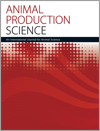
Animal Production Science
Volume 63 Number 8 2023
The life of a pasture-based dairy cow starts and ends with periods of daily management – first as a pre-weaned calf and later as a lactating cow – but there is a distinct lack of data on how animals are managed between these two life phases. This review consolidates the scientific literature and provides an overview of factors affecting the welfare of weaned heifers on pastoral dairies. Risks to heifer welfare are identified and recommendations to mitigate these risks made.
AN22248 Abstract | AN22248 Full Text | AN22248PDF (1.6 MB) Open Access Article
The development of the placenta in sows has a significant impact on the growth and development of piglets, ultimately affecting production efficiency. Understanding the factors that contribute to successful placental development is key to improving overall production outcomes. The ratio of valine to leucine affects placental development and results have shown that an appropriate V:L ratio positively affects the reproductive performance of pregnant and lactating sows. Therefore, adjusting the V:L ratio can promote the reproductive performance of sows and increase production efficiency.
AN22101Processed cassava peel–leaf blends: effect on performance, carcass yield, organ weights and ileal microflora of growing pigs
 , Olufemi Sunday Akinola, Titilayo Modupe Adeleye, Oluwakemi Tinuke Irekhore, Adebukunola Olufunmilayo Lala and Abimbola Oladele Oso
, Olufemi Sunday Akinola, Titilayo Modupe Adeleye, Oluwakemi Tinuke Irekhore, Adebukunola Olufunmilayo Lala and Abimbola Oladele Oso
The feeding of pigs is of significant concern as it accounts for the major cost of production. This necessitated the investigation into ways of utilising and combining the available unconventional crop by products such as cassava peels and leaves as replacement for maize in the diet of pigs. This study discovered that processed cassava peel–leaf blends can replace maize in the diet of growing pigs without negatively affecting performance, dressing percentage, organ weights and ileal microflora of pigs.
Some studies have investigated the application of sunflower meal (SFM) on feeding livestock poultry. However, there have been few researches related to ferment SFM. In this experiment, the solid-state fermentation process of SFM was optimised. The results showed that the nutritional quality and feeding value of SFM were improved by microbial SSF. The results of this study will contribute to the research on the development of protein-feed raw materials for animals and explore the application of SFM.
Since carrots are widely consumed worldwide, the production of by-products is also huge. The pig industry is struggling with the increase in feed cost and the odour problem of manure. This study confirmed the effect of carrot by-product feeding on blood profiles, immune responses, and faecal characteristics in fattening pigs. The results of this study suggest that carrot by-products are effective in enhancing immunity and reducing the odour of manure without negative effects on pigs.
Whole-farm simulation modelling suggests that integrating dual-purpose crops of wheat and canola to 25% of the farm decreases the winter feed gap and facilitates autumn-lambing systems across environments. Spring- and autumn-lambing systems with dual-purpose crops achieved more than double the farm gross margins compared with the standard spring-lambing, pasture-only system. In higher-rainfall, cooler environments, autumn-lambing systems with dual-purpose crops returned higher gross margins due to grain production and lower supplement demand, but in lower-rainfall, warmer environments, spring-lambing systems were still more profitable.
AN22228 Abstract | AN22228 Full Text | AN22228PDF (3.2 MB) | AN22228Supplementary Material (376 KB) Open Access Article
AN22345A model of flystrike pesticide resistance management on sheep: use of pesticide rotations
The development in sheep blowfly of resistance to pesticides is a problem for sheep producers. A model of sheep blowfly pesticide resistance management shows that a rotation of pesticides will increase the period when preventive control can be used but will not prevent resistance from eventually developing to all products used in the rotation. The model may assist in studying interactions between different pesticides and inclusion of non-pesticide methods of flystrike management to delay development of resistance.
AN22345 Abstract | AN22345 Full Text | AN22345PDF (976 KB) Open Access Article
This study aimed to characterise the effect of prolonged ageing and cooking on pork-quality traits. Longissimus lumborum samples from 12 carcasses were aged 3 days (conventional ageing) or 15 days (prolonged ageing) and cooked at 50–80°C. Prolonged ageing was favourable for minimising cooking loss at higher cooking temperatures but was only favourable for tenderness at the lowest cooking temperature. Low pH of the samples is likely to have caused the lack of tenderisation with ageing.
AN22389 Abstract | AN22389 Full Text | AN22389PDF (1 MB) Open Access Article



